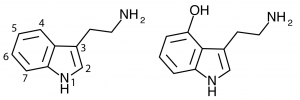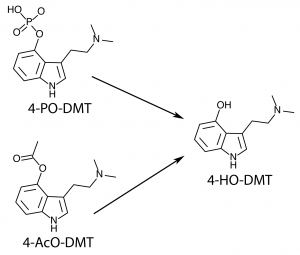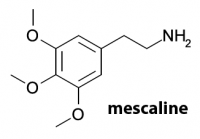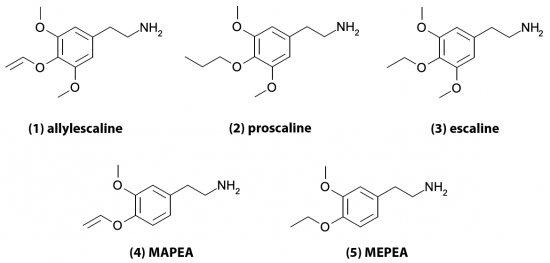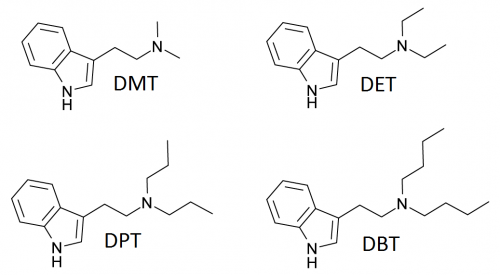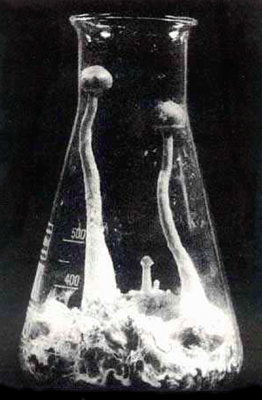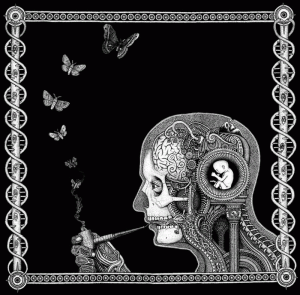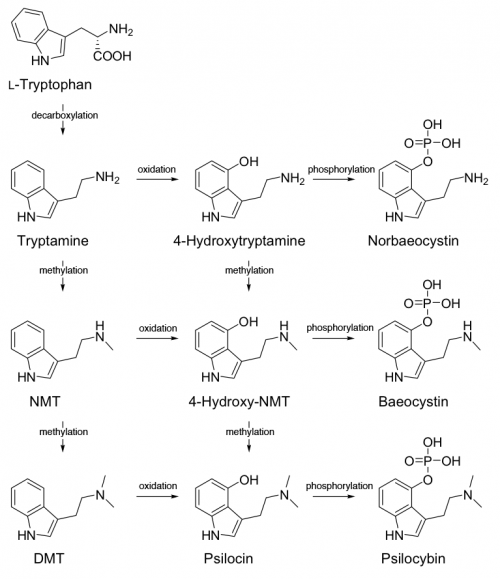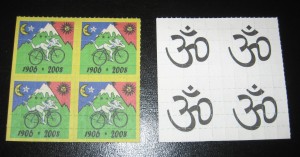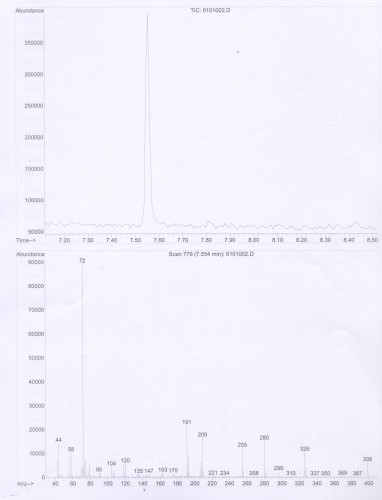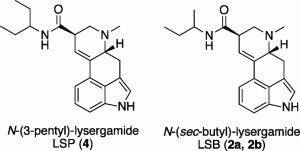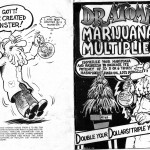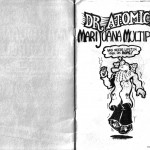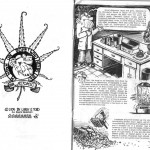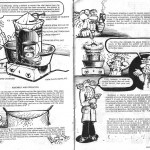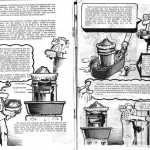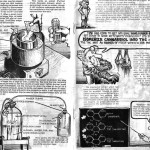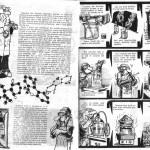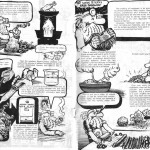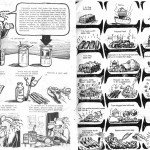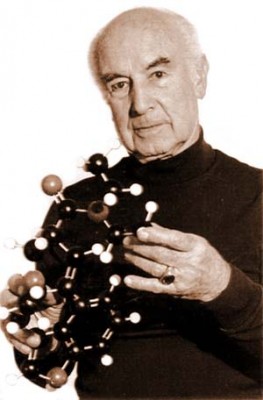An edited version follows, and a link to the original paper may be found at the end of the post.
In recent months, both the lay and medical press have been filled with warnings about the dangers and harmful effects of the hallucinogenic agents such as LSD-25, mescaline and psilocybin. These warnings have risen in response to flagrant misuse of the substances by illicit operators using black-market materials for parties and “kicks,” and by irresponsible investigators who, enthralled with the remarkable possibilities of these chemicals, have sponsored and encouraged their widespread use under improperly controlled conditions without medical supervision.
In view of the substantial promise which even a cursory study of the work of the leading investigators in this field reveals, it is puzzling that there should be so little acceptance of the usefulness of the hallucinogens. Following are probably the outstanding reasons:
1) Lack of understanding of the drug experience: The hallucinogens (more properly called psychedelic agents when used to explore new understanding of the mind) open up dimensions of consciousness with which few therapists are familiar. The heightened sensitivity and enhancement of sensory modalities, the reliving of events in time and other dimensionless phenomena, and the oft-reported profound philosophic and universal experiences, tend to lie outside the therapists’ conceptual frame of reference. By denying these experiences, or attempting to restrict the experience to his own theoretical framework, the therapist can produce great conflict in the subject, and cause him to reject important parts of the experience or force him into delusional solutions.
2) Lack of knowledge of factors affecting the experience: Contrary to the belief of many investigators, the hallucinogens do not produce experiences but inhibit repressive mechanisms that ordinarily operate and simply allow subjects to explore the contents of their own minds. The nature of his exploration will depend on a) the mental content, the subject’s individual personality, conditioning, attitudes, values and beliefs; b) his preparation for the experience, which determines in part how he will use the opportunity; and c) his environment during the experience, which very appreciably affects how he will deal with the material he touches on and the opportunities afforded. Most investigators now agree that preparation and setting profoundly affect the subject’s experience, and the presence of supportive, understanding, accepting companions is essential to a comfortable and rewarding session.
3) Misuse of the hallucinogens: Unfortunately, the dramatic appeal of the psychedelic experience has attracted many elements of the community-the “beatnik” crowd seeking new experiences or escape from the established and the humdrum, the unsavory elements sensing an opportunity to expand narcotic traffic, and persons genuinely seeking greater knowledge. There are included many unstable persons seeking a ready solution to their difficulties, which has led to flourishing black-market trade in the psychedelics, as well as widespread, uncontrolled clandestine usage, in settings that afford little in the way of safeguards. It is from precisely such illicit usage that has come the bulk of the reports of harmful outcomes.
Even professional investigators have sometimes used these substances improperly, which undoubtedly accounts for the absence of support for research in these fields. Such misuse includes:
Inadequate preparation: If the nature of the experience and the factors affecting it are not properly understood (as mentioned above), then the subject is unlikely to be in a frame of mind to take full advantage of the exploration the experience affords.
Improper support to subject: A clinical or judgmental attitude or too ready a desire to analyze or interpret the patient’s experience will inhibit the experience seriously and may cause grave discomfort. The impact of the therapist holding conceptual views that do not encompass what the patient is experiencing has already been discussed.
Too frequent use of LSD: Regardless of the content of the experience and whether or not it is interpretable, every exposure of the deep layers of the mind produces material which must then be assimilated and integrated by him into his personality structure. This takes time, and can only be done in the process of facing life experiences. To have LSD experiences one on top of another can so swamp the psyche with data that dissociation is the inevitable result. The object of any educational experience is to produce data for more successful living, and to adulterate one with additional data before it has been properly assimilated not only distorts all the data, but can result in great confusion.
Improper handling of patients: By not understanding the powerful subjective states experienced under LSD, uninformed therapists or companions can wreak considerable havoc. Subjects left alone can sometimes become quite frightened, or can escape and commit harmful acts. Those permitted to drive while still experiencing imagery are dangerous to themselves and others. Insensitive companions who do not detect the extremely hostile or destructive feelings of the subject may not be ready with restraints when necessary.
Improper dosage: Subjects vary appreciably in their sensitivity to LSD, and in the rigidity of the intellectual defenses to be penetrated. Consequently, the dosage must be adjusted to the individual patient. Under-dosage leads to an unsatisfactory experience, where the patient is unable to break through to a satisfactory resolution of his problems. Far more dangerous is pronounced overdosage, where subjects may be driven into ranges of experience for which they are not prepared or willing to accept, so that they may become considerably unbalanced as a result of the experience.
Overenthusiastic response: Just as damaging as the ignorant and inept administrators of these drugs are those who have become so enthusiastic about them that they have lost their sense of rational judgment. It is not unnatural for those who have had the privilege of experiencing profound philosophic, perhaps even spiritual, truths to be elated about them. But by the same token, it would appear that the more one has learned about the nature of things, the greater is one’s responsibility to society. And it seems only natural that the greater one penetrates beyond the habitual frames of reference, the more time and work and effort is required to assimilate such profound truths into one’s daily life. Apparently there are those who having discovered a fairly simple way to stand on those great pinnacles of knowledge, choose to return to them frequently and enjoy them rather than to go to the effort of readjusting their personalities to be in line with the new truths discovered. The consequences of these repeated high dosages seems to be the twofold result of deteriorated judgment and impaired perception and communication on the usual level of operation. The ability to work creatively within the structures of society seems lost, and inflation and feelings of omnipotence, followed by revolution or withdrawal from society are likely.
By far the greatest damage has been caused by the illicit use of the hallucinogens. Lay interest has been great, both through fascination with the exploration of new experience and knowledge, and as a means of fulfilling special self-interests. Black market usage of LSD is widespread, and becoming an ever greater problem. The most effective counter-measure to improper and uninformed use of these agents is forward and aggressive medical leadership. Should the intense public interest in these substances as new avenues to increased self-understanding and general knowledge prove justified, then the medical profession has an obligation to see that all factors concerning the use of these substances are well known, and that the proper circumstances for their use be well defined and provided.
In summary, there is substantial evidence that many avenues may be opened up by research with the psychedelics, both in developing new treatment methods and improving the understanding of the human mind. Hazards can be reduced to negligible considerations through informed use. In addition, proper medical knowledge is urgently needed to curtail widespread illicit use. In view of these factors, it is hoped that more intensive investigation of these powerful new tools will take place.
